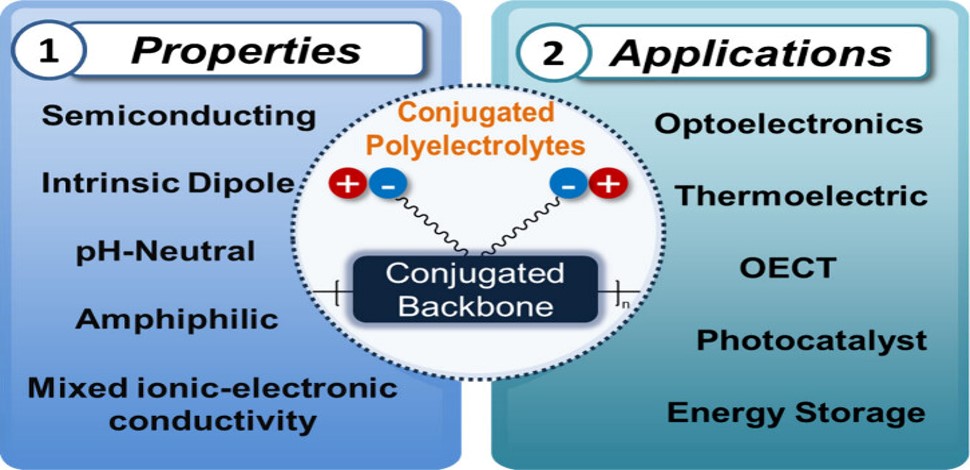Next-Generation Mixed Ionic-Electronic Semiconducting Polymers
PhD - Hasselt | More than two weeks ago
Mixed ionic-electronic semiconducting polymers – either conjugated polyelectrolytes or glycol-decorated conjugated polymers – constitute a peculiar class of materials defined by a π-conjugated backbone and hydrophilic side chains. The delocalized π electrons offer distinct electronic and optical properties, while the presence of ionic or amphiphilic moieties enables precise adjustments of hydrophilicity, pH neutrality, self-doping, and ionic conductivity. The recent proliferation of applications for mixed ionic-electronic semiconducting polymers underscores their dual nature, marking a notable expansion in their potential for technological innovation. The ability to fine-tune both electronic and ionic traits broadens the horizon for their utility, spanning organic/inorganic opto/bioelectronics, electrochemical transistors, neuromorphics, photocatalytic water splitting, thermo-electric devices, and energy storage systems.[1-4]
Despite recent successes in many of these emerging application domains, significant challenges and opportunities remain. Synthetic strategies for integrating a wide range of structural units that can tailor optoelectronic and ion transport functions have been reported, but the critical structural parameters defining the polymer performance remain (very) poorly understood. This challenge is addressed in the present proposal by targeted synthesis and characterization of novel, top-quality, p- and n-type mixed ionic-electronic semiconducting polymers, and their analysis in selected applications.
Over the past years, the imomec group of IMEC has built up dedicated expertise on the synthesis of advanced mixed ionic-electronic polymer semiconductors, notably in the framework of the H2020 project MITICS (https://www.mitics-h2020-fetopen.eu/). Particular focus on the synthetic method, limiting structural defects to the highest possible extent, has afforded record-high transconductance values for p-type accumulation-mode OECTs, conventional as well as all-printed devices.[5-7] These results have received significant exposure, resulting in many new contacts and material deliveries to various partners. In parallel, these polymers have also been explored for hydrogen generation, affording promising initial results. This Ph.D. project aims to build on these solid foundations and explore the development of novel high-performance p- and n-type hydrophilic conjugated polymers for neuromorphic electronics/computing and photocatalytic hydrogen evolution. The candidate will focus on the synthesis of the envisaged hydrophilic conjugated polymers, coupled with in-depth material characterization to obtain structure-property relationships. Next, the novel materials will be evaluated for neuromorphics and hydrogen generation.
The project will be conducted as part of an interdisciplinary and multicultural team of highly skilled scientists who work toward next-generation, sustainable, optoelectronic devices based on alternative (solution-processable) semiconductors. The research will be performed in the newly built ‘Science Tower’, the imo-imomec Physics/Engineering building located on the campus of Hasselt University in Diepenbeek (Belgium), and (possibly) the Energyville facilities in Genk. These facilities contain state-of-the-art laboratories and equipment for both the materials and device aspects of this Ph.D. project.

Required background: Chemistry, Materials Science or Equivalent
Type of work: 90% experimental, 10% literature
Supervisor: Wouter Maes
Co-supervisor: Koen Vandewal
Daily advisor: Laurence Lutsen
The reference code for this position is 2026-139. Mention this reference code on your application form.
